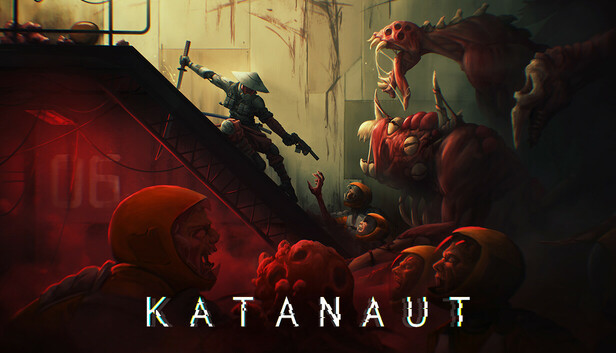In a year overflowing with roguelites and metroidvanias, standing out has become a herculean task. Every month, a new pixel-art action platformer tries to win our attention, only to vanish into the ever-growing Steam backlog. Katanaut, the debut title from indie studio Voidmaw, doesn’t just stand out — it cuts through the noise with a razor-sharp blade. Mixing tight, punishing combat, haunting cosmic horror, and clever level design, this game proves that the genre still has space for innovation. Released in September 2025, Katanaut has already gained a reputation for being both brutally challenging and atmospherically unforgettable
Katanaut places you in the boots of Naut, a lone warrior armed only with a katana, venturing into a colossal space station that has fallen into nightmarish ruin. Once a beacon of scientific progress, the station has now become a labyrinth of twisted corridors, organic infestations, and echoing screams. Its inhabitants have mutated into grotesque creatures that seem to be half-human, half-cosmic horror.
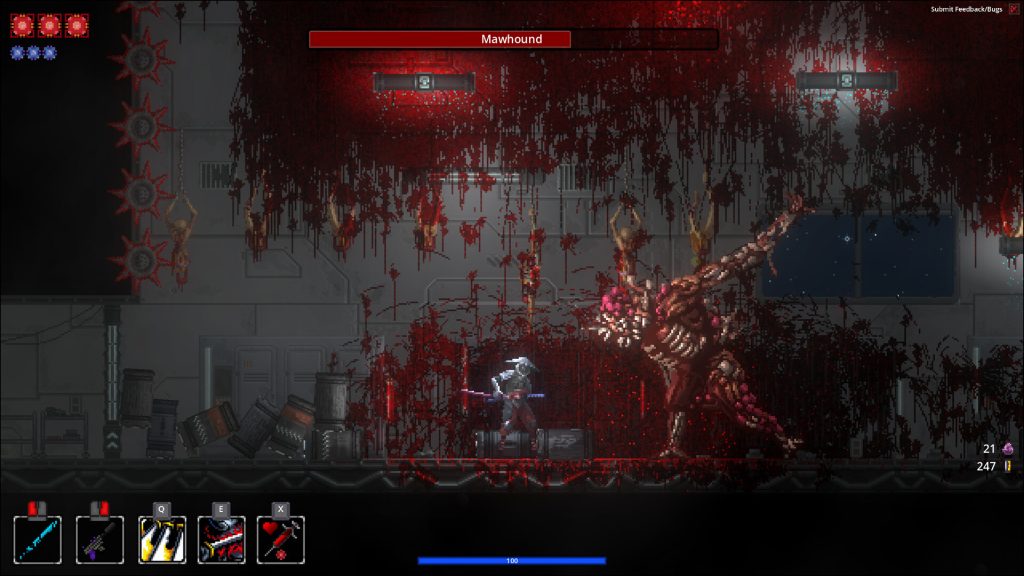
Rather than relying on long cutscenes or verbose dialogue, Katanaut uses environmental storytelling to slowly unveil its mysteries. Logs scattered across abandoned labs, flickering holograms, and subtle environmental details give you fragmented glimpses into what went wrong. There’s a tangible sense of unease as you move deeper — not because you’re told to feel scared, but because the world feels authentically broken and alien.
This approach echoes games like Hollow Knight and Dark Souls, where narrative emerges organically through exploration. You never get the full story handed to you on a silver platter, but each clue pushes you to piece together the puzzle yourself. It’s a refreshing change from the expository overload common in many modern titles
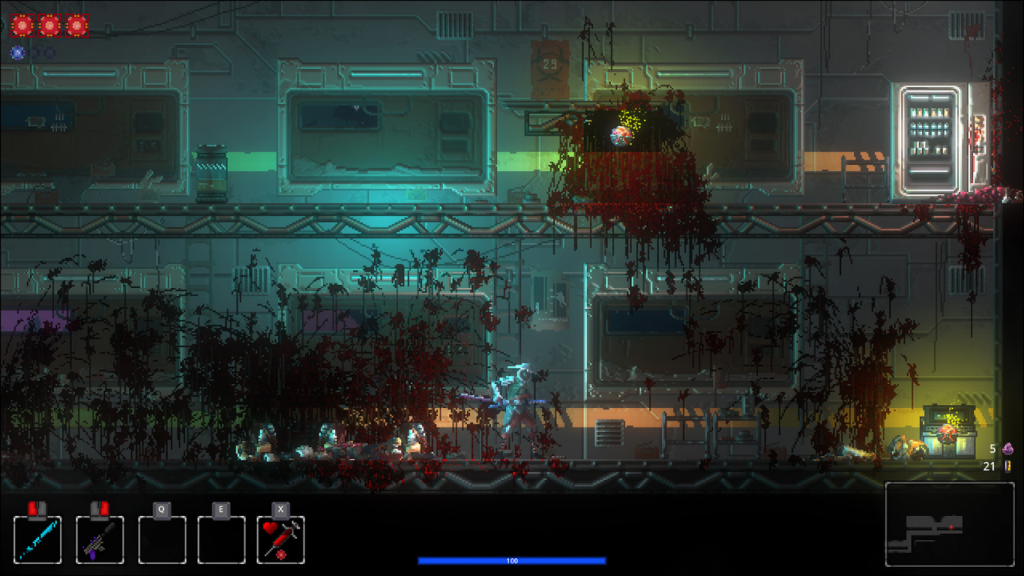
The core of Katanaut lies in its fast, skill-based combat. Every encounter demands focus, timing, and deliberate action. Naut wields a katana — no guns, no magic, no overpowered special abilities. Each swing carries weight, and every missed attack can lead to a swift death.
The game’s parry system is particularly well-designed. By pressing the parry button at the exact moment of impact, you can deflect incoming attacks and leave enemies temporarily staggered. Nailing this mechanic consistently feels incredibly satisfying, turning battles into tense duels where a single mistake can cost everything.
Movement is another standout feature. Because parts of the station are in low or zero gravity, jumps and dashes behave differently depending on your environment. Learning how to use this floaty movement to your advantage — for example, chaining mid-air attacks while drifting between platforms — is essential to survival. This gives Katanaut a unique rhythm that sets it apart from more grounded action platformers.
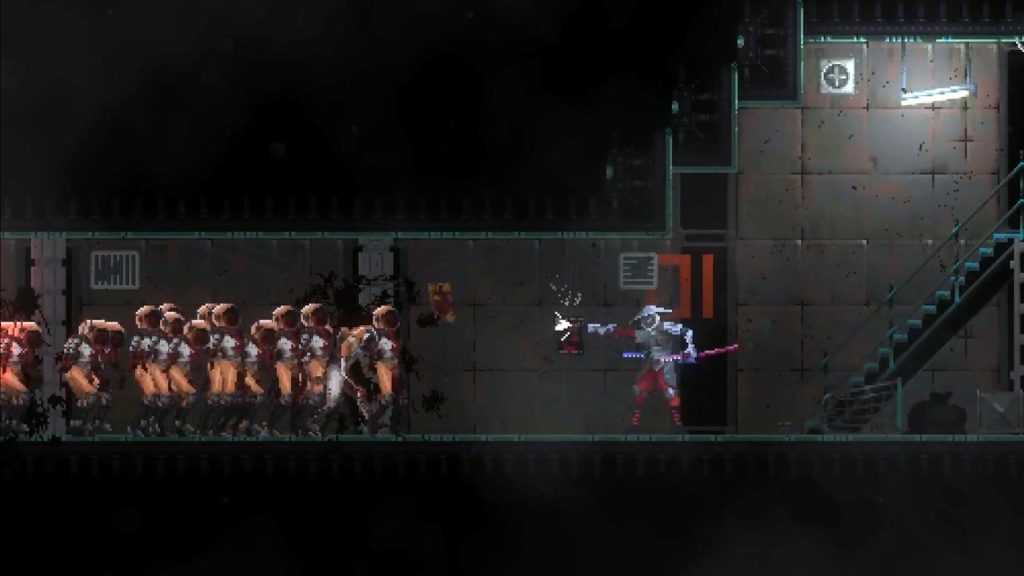
Like many modern roguelites, Katanaut uses persistent progression to soften the sting of death. While you do return to the beginning after dying, certain upgrades and abilities carry over, making subsequent runs feel more meaningful. The game cleverly randomizes level layouts, enemy placements, and item drops each time, so no two runs are exactly the same. This unpredictability ensures that the challenge never grows stale.
Boss fights deserve special mention. Each boss feels distinct, with patterns that demand careful study and split-second reactions. Some bosses test your parry timing, while others turn the environment itself into a hazard. A few of these encounters can feel a bit overtuned, spiking the difficulty curve abruptly, but they’re undeniably memorable
Katanaut’s visual identity is one of its greatest strengths. At first glance, it’s another pixel-art indie title, but Voidmaw’s artists have pushed the aesthetic to new heights. The game uses dynamic lighting and shadows to craft a space station that feels simultaneously retro and hauntingly modern. Flashing red alarms, flickering corridor lights, and pulsing organic growths all contribute to an oppressive, eerie atmosphere.
Each area of the station feels distinct. From frozen research labs with cracked glass and drifting ice particles, to industrial sectors humming with broken machinery, to horrifying organic zones that look like the station itself has mutated — the variety is impressive. Enemies are equally well-designed, ranging from skittering abominations to sword-wielding infected soldiers that mirror your own movements like deranged samurai.
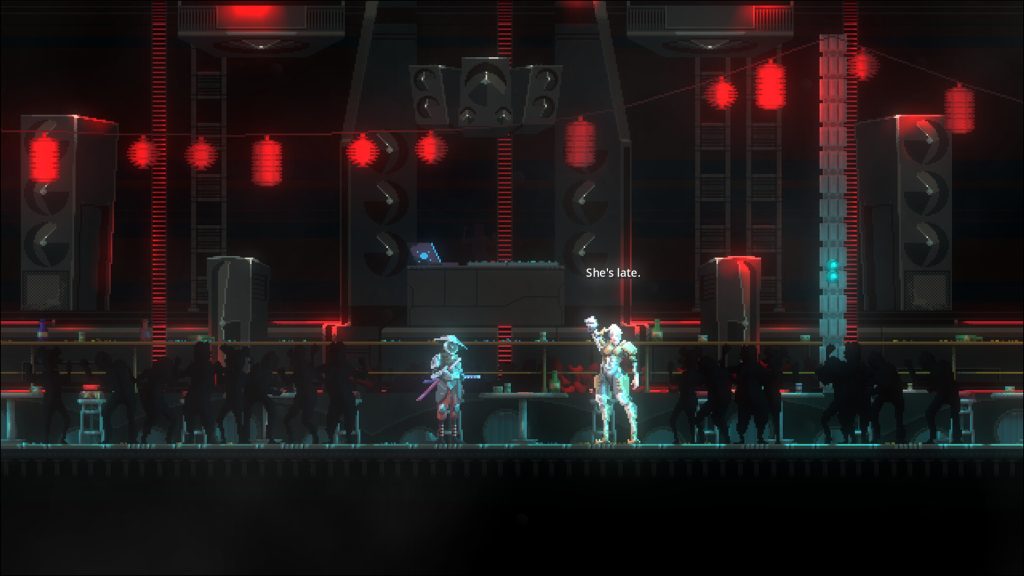
Sound design plays a massive role in elevating the tension. Ambient electronic soundscapes, punctuated by mechanical groans and distant shrieks, make even empty hallways feel dangerous. The soundtrack subtly shifts as you explore, blending dark synth melodies with unsettling ambient noise. Playing with headphones is strongly recommended — the audio adds layers of immersion that visuals alone couldn’t achieve
Katanaut doesn’t hold your hand. It expects you to die, learn, and adapt, carving your own path through the hostile corridors of a station that feels alive in the worst possible way. Every run is a tense ballet of blades and movement, and every victory feels earned. It’s a game that rewards patience, curiosity, and precision — and punishes carelessness without mercy.
If you’re a fan of challenging combat, rich atmosphere, and games that respect your ability to figure things out on your own, Katanaut is easily one of the most memorable titles of 2025. It’s not for everyone — players looking for a relaxed or straightforward experience might bounce off its harsh learning curve. But for those willing to commit, Katanaut offers a singular, unforgettable journey into the void



